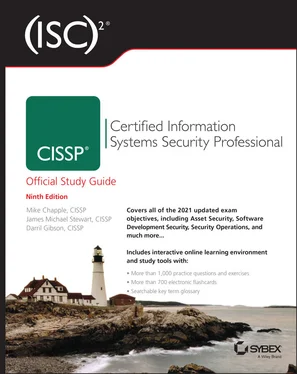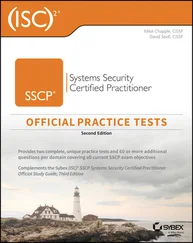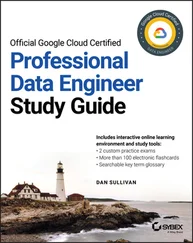Recovery controls are an extension of corrective controls but have more advanced or complex abilities. A recovery control attempts to repair or restore resources, functions, and capabilities after a security policy violation. Recovery controls typically address more significant damaging events compared to corrective controls, especially when security violations may have occurred. Examples of recovery controls include backups and restores, fault-tolerant drive systems, system imaging, server clustering, antimalware software, and database or virtual machine shadowing. In relation to business continuity and disaster recovery, recovery controls can include hot, warm, and cold sites; alternate processing facilities; service bureaus; reciprocal agreements; cloud providers; rolling mobile operating centers; and multisite solutions.
A directive control is deployed to direct, confine, or control the actions of subjects to force or encourage compliance with security policies. Examples of directive controls include security policy requirements or criteria, posted notifications, guidance from a security guard, escape route exit signs, monitoring, supervision, and procedures.
Security Control Assessment
A security control assessment (SCA) is the formal evaluation of a security infrastructure's individual mechanisms against a baseline or reliability expectation. The SCA can be performed in addition to or independently of a full security evaluation, such as a penetration test or vulnerability assessment.
The goals of an SCA are to ensure the effectiveness of the security mechanisms, evaluate the quality and thoroughness of the risk management processes of the organization, and produce a report of the relative strengths and weaknesses of the deployed security infrastructure. The results of an SCA may confirm that a security mechanism has sustained its previous level of verified effectiveness or that action must be taken to address a deficient security control. In addition to verifying the reliability of security controls, an assessment should consider whether security controls affect privacy. Some controls may improve privacy protection, whereas others may in fact cause a breach of privacy. The privacy aspect of a security control should be evaluated in light of regulations, contractual obligations, and the organization's privacy policy/promise.
Generally, an SCA is a process implemented by federal agencies based on NIST SP 800-53 Rev. 5, titled “Security and Privacy Controls for Information Systems and Organizations” ( csrc.nist.gov/publications/detail/sp/800-53/rev-5/final). However, though defined as a government process, the concept of evaluating the reliability and effectiveness of security controls should be adopted by every organization that is committed to sustaining a successful security endeavor.
Monitoring and Measurement
Security controls should provide benefits that can be monitored and measured. If a security control's benefits cannot be quantified, evaluated, or compared, then it does not actually provide any security. A security control may provide native or internal monitoring, or external monitoring may be required. You should take this into consideration when making initial countermeasure selections.
Measuring the effectiveness of a countermeasure is not always an absolute value. Many countermeasures offer degrees of improvement rather than specific hard numbers as to the number of breaches prevented or attack attempts thwarted. Often to obtain countermeasure success or failure measurements, monitoring and recording of events both prior to and after safeguard installation is necessary. Benefits can only be accurately measured if the starting point (i.e., the normal point or initial risk level) is known. Part of the cost/benefit equation takes countermeasure monitoring and measurement into account. Just because a security control provides some level of increased security does not necessarily mean that the benefit gained is cost-effective. A significant improvement in security should be identified to clearly justify the expense of new countermeasure deployment.
Risk Reporting and Documentation
Risk reporting is a key task to perform at the conclusion of a risk analysis. Risk reporting involves the production of a risk report and a presentation of that report to the interested/relevant parties. For many organizations, risk reporting is an internal concern only, whereas other organizations may have regulations that mandate third-party or public reporting of their risk findings. A risk report should be accurate, timely, comprehensive of the entire organization, clear and precise to support decision making, and updated on a regular basis.
A risk register or risk log is a document that inventories all the identified risks to an organization or system or within an individual project. A risk register is used to record and track the activities of risk management, including the following:
Identifying risks
Evaluating the severity of and prioritizing those risks
Prescribing responses to reduce or eliminate the risks
Tracking the progress of risk mitigation
A risk register can serve as a project management document to track completion of risk response activities as well as a historical record of risk management over time. The contents of a risk register could be shared with others to facilitate a more realistic evaluation of real-world threats and risks through the amalgamation of risk management activities by other organizations.
A risk matrix or risk heat map is a form of risk assessment that is performed on a basic graph or chart. It is sometimes labeled as a qualitative risk assessment. The simplest form of a risk matrix is a 3×3 grid comparing probability and damage potential. This was covered in Chapter 1.
Risk analysis is performed to provide upper management with the details necessary to decide which risks should be mitigated, which should be transferred, which should be deterred, which should be avoided, and which should be accepted. The result is a cost/ benefit comparison between the expected cost of asset loss and the cost of deploying safeguards against threats and vulnerabilities. Risk analysis identifies risks, quantifies the impact of threats, and aids in budgeting for security. It helps integrate the needs and objectives of the security policy with the organization's business goals and intentions. The risk analysis/risk assessment is a “point in time” metric. Threats and vulnerabilities constantly change, and the risk assessment needs to be redone periodically in order to support continuous improvement.
Security is always changing. Thus, any implemented security solution requires updates and changes over time. If a continuous improvement path is not provided by a selected countermeasure, it should be replaced with one that offers scalable improvements to security.
An enterprise risk management (ERM) program can be evaluated using the Risk Maturity Model (RMM) . An RMM assess the key indicators and activities of a mature, sustainable, and repeatable risk management process. There are several RMM systems, each prescribing various means to achieve greater risk management capability. They generally relate the assessment of risk maturity against a five-level model (similar to that of the Capability Maturity Model [CMM]; see Chapter 20, “Software Development Security”). The typical RMM levels are as follows:
1 Ad hoc—A chaotic starting point from which all organizations initiate risk management.
2 Preliminary—Loose attempts are made to follow risk management processes, but each department may perform risk assessment uniquely.
Читать дальше












